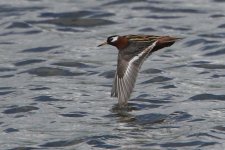DriftlessRoots
Member

EDIT: I've clarified my question in another reply below.
I’ve undertaken a project to get my life list and other lists tidied up and standardized before they get too big to do so. For reference I’m using an IOC names list from here:
Master Lists – IOC World Bird List
Now that I’ve gotten far enough along that starting over would be a huge pain 😅, I’m wondering if that’s really the list I should be using. I know pretty much zero about world ornithological authorities and only landed on IOC because it was the first result when I googled for lists of all the birds in the world. Also, I have no idea how I’m going to deal with (further) taxonomic updates but I’ll deal with that later, if at all.
Don’t know if this is the right area to ask this so I can move it if it’s not.
I’ve undertaken a project to get my life list and other lists tidied up and standardized before they get too big to do so. For reference I’m using an IOC names list from here:
Master Lists – IOC World Bird List
Now that I’ve gotten far enough along that starting over would be a huge pain 😅, I’m wondering if that’s really the list I should be using. I know pretty much zero about world ornithological authorities and only landed on IOC because it was the first result when I googled for lists of all the birds in the world. Also, I have no idea how I’m going to deal with (further) taxonomic updates but I’ll deal with that later, if at all.
Don’t know if this is the right area to ask this so I can move it if it’s not.
Last edited:






